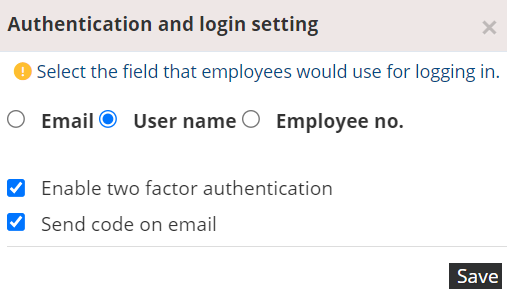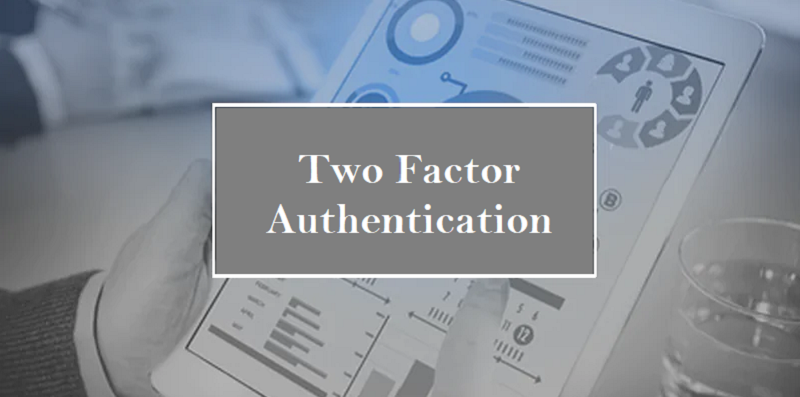With the rise in cyber threats, it is becoming extremely important for HR software providers to take measures and prevent any damage to employee and employer’s sensitive information. Fortunately, two-factor authentication (2FA) in HR systems can help keep your accounts safe.
Numerous websites are being hacked which is leading to exposure of user’s personal information to hackers. Since cyber attacks are becoming more sophisticated, it is no longer sufficient to rely on traditional password-based authentication to secure confidential data. That is where two-factor authentication (2FA) plays a vital role in providing an additional layer of security and avoiding phishing attacks.
What is Two-Factor Authentication (2FA) in HR Systems?
Two-factor authentication (2FA), also referred as dual-factor authentication, is a security process that relies on an additional source of verification besides password, to access your online account in an HR system. Thus a user has to provide two different authentication factors to access their online data.
The two factors are typically something you know (such as a password or PIN) and something you possess (such as a smartphone or token). The two factor authentication solutions safeguard both a user’s login details and the data they can access in their HR application.
How Does Two-Factor Authentication Work in Empxtrack HR System?
Two-factor authentication works in a simple way. Empxtrack stores all the data securely in secure datacenters provided by world class organizations.
When two factor authentication is enabled in Empxtrack and the user tries to login to their application, it asks them to identify themselves twice. They are first asked to enter their login details (username and password) as they normally would. Instead of being granted direct access to the system the user is further prompted to provide a second form of authentication. A verification code is sent to the user’s registered email id.
Once the user provides both authentication factors, they are granted access to the application. This helps in preventing identity thefts.

Why is Two-Factor Authentication Necessary?
Two-factor authentication provides an extra layer of security to prevent unauthorized access to your sensitive data. Relying on strong passwords is not sufficient. Here are some facts:
- » 90% of passwords can be cracked in less than six hours.
- » Two-thirds of people use the same password everywhere.
- » 57% of people who have already been scammed in phishing attacks still haven’t changed their passwords.
(Source: The Business Journals)
However, by using two-factor authentication (2FA) in HR systems, even if someone knows your password, they cannot access your account unless they also have access to the second factor of authentication. Due to this, it becomes increasingly challenging for hackers and cybercriminals to steal your data or access your account.
Furthermore, 2FA provides protection against phishing attacks. In a phishing attack, a hacker may send an email that appears to be from a legitimate source, such as your bank. They will then ask you to click on a link to log in to your account. The link, however, will take you to a fake website that looks like the actual one, and ask you for your username and password.
In two-factor authentication platforms falling for phishing attacks is not simple. Since the hacker does not have access to the second factor of authentication, they won’t be able to access your account even with your password.
Benefits of Implementing Two-Factor Authentication (2FA) in HR Systems
With two-factor authentication in HR systems, businesses can continuously track and safeguard their most vulnerable information and networks.
There are multiple benefits that highlight the importance of two factor authentication for businesses.
Increased Security
The primary benefit of 2FA is increased security over HR data. A hacker would require both your password and an additional source of verification to gain access to your account or HR system.
This additional layer of security makes it much more challenging for attackers to breach your system. They would need to have physical access to your 2FA device or know your authentication code.
Mitigate the Risk of Phishing Attacks
Hackers frequently use phishing attacks to steal user passwords. In a phishing attack, a user is tricked into giving away their login details by clicking on a link or downloading a file that contains malware.
However, two-factor authentication in HR software helps mitigate the risk of phishing attacks by requiring an additional piece of information to log in, such as a one-time password or a biometric scan.
Quick Account Recovery
The two-factor authentication offers faster and simpler account recovery.
Additionally, this security feature allows users to log in without the need to manually enter their password. This is achieved by requiring an SMS pin or verification code prior to accessing the account or confirming transactions.
This method adds an additional layer of security, making it more difficult to hack, while also offering the convenience of not having to remember the password. This is particularly helpful in today’s world where most people have several accounts with unique passwords.
Time Saving
Two-factor authentication is certainly a secure way for users to reset their passwords without involving the help desk professionals or system administrators. As a result, the professionals and administrators end up saving time and effort that they would have otherwise spent on resetting passwords for employees.
The net result is increased efficiency and productivity.
Ease of Use
Two factor authentication is easy to use, and provides a seamless user experience. Most 2FA solutions are designed to work with existing login processes, which means that users do not need to change their login procedures.
Furthermore, two factor authentication can also be implemented on mobile apps, making it easy for users to authenticate from anywhere, at any time.
Conclusion
2FA reduces the risk of data breaches and cyberattacks, which can result in costly legal fees, fines, and damage to your reputation.
Two-factor authentication in HR systems is a crucial security feature that protects sensitive HR information against data breaches. It additionally adds a layer of security and prevents businesses from cyber attackers who can access your online accounts.
Frequently Asked Questions
Q1. | What are the different types of two-factor authentication (2FA) in HR systems? |
| Ans. | There are several types of two factor authentication in HR systems. These include SMS authentication, mobile authentication apps, hardware tokens, biometric authentication, and email authentication. |
Q2. | How does SMS authentication work? |
| Ans. | A verification code is sent to the user’s mobile phone via text message. The user then enters the code into the login screen to access their account. |
Q3. | How do mobile authentication apps work? |
| Ans. | Mobile authentication apps generate a unique, time-sensitive code that the user enters into the login screen. The app uses a secure algorithm to generate the code, which changes every 30 seconds. |
Q4. | How does email authentication work? |
| Ans. | Email authentication involves sending a verification code to the user’s email address. The user must then enter the code into the login screen to access their account. |
Q5. | How can I enable two-factor authentication (2FA) in HR systems? |
| Ans. | The process for enabling 2FA varies depending on the platform or service. Most platforms have a security or privacy section in their settings where users can enable two-factor authentication. Some platforms also offer step-by-step guides or tutorials to help users enable 2FA. To enable two factor authentication in your Empxtrack application, contact us. |
Q6. | What are some two factor authentication examples? |
| Ans. | Using multi-factor authentication is a feasible way to protect your accounts against cyber threats. Examples are:
|




This article on two-factor authentication in HR systems is a crucial read! As cyber threats continue to rise, it’s more important than ever for organizations to prioritize data security, especially when it comes to sensitive employee information. Implementing two-factor authentication adds an essential layer of protection that can significantly reduce the risk of breaches. I appreciate how the article breaks down the benefits and provides practical insights for HR professionals. It’s a great reminder that investing in security measures not only protects the organization but also builds trust with employees. Thanks for sharing this important topic!
Glad you found the article helpful! Data security is crucial, and two-factor authentication is a key step in safeguarding sensitive information.
This insightful blog emphasizes the critical role of two-factor authentication in bolstering security within HR systems, ensuring data integrity and peace of mind for businesses. A good read!
Very nice feature and this is really helpful for Empxtrack users to prevent misusing their credentials.
This is very informative. Thanks for sharing